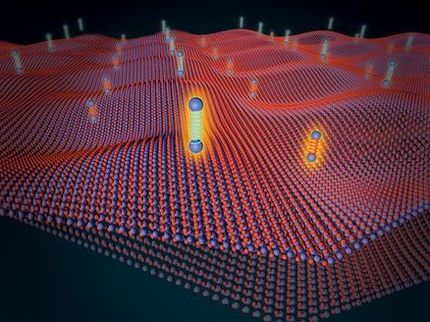Superconductor survives ultra-high magnetic field
Advertisement
Physicists from the universities of Groningen and Nijmegen (the Netherlands) and Hong Kong have discovered that transistors made of ultrathin layers molybdeendisulfide (MoS2) are not only superconducting at low temperatures but also stay superconducting in a high magnetic field. This is a unique phenomenon with exciting promises for the future. The experiments were the first to have been performed at the High Field Magnet Laboratory in Nijmegen, jointly operated by Radboud University and the FOM foundation.
Superconductivity is a state in which the electrical resistance of a material disappears completely. Normally, this phenomenon only exists at low temperatures and disappears under a high magnetic field. But in the High Field Magnet Laboratory (HFML), physicists discovered that MoS2 - which can be bought at the home depot stores as dry lubricant - remains superconducting under a high magnetic field of 37.5 Tesla.
Strongly pinned electron pairs Superconductivity is induced when free electrons in a material are attracted to each other and form weakly bonded electron pairs. These pairs condensate to a superconducting state only when all possible disturbances in the material are minimal and therefore, superconductivity usually exists at very low temperature. When a material is exposed to a magnetic field, the weak bonding between the electron pair can be easily broken. The rupture of the pair destroys the superconductivity when disturbance from the magnetic field becomes strong enough.
Surprisingly, the superconducting state of MoS2 survives high magnetic fields because the paired electrons are intrinsically associated with an internal high magnetic field, which can reach nearly one hundred Tesla, much higher than the 37.5 Tesla provided by the HFML. For comparison: a conventional fridge magnet has a magnetic field of approximately 0.1 Tesla. Uli Zeitler, physicist at the HFML at Radboud University explains: 'MoS2 behaves in a way that contradicts a law in physics, the so called Pauli paramagnetic limit.'
Information in electron spin Although the current publication is very fundamental, Zeitler does have some ideas for future applications. 'There is information stored inside the charge and spin of electrons, the direction of their internal magnetic field. If you can influence this spin, for instance with an electric field, you can store information in there. And in principle, this technique could be used in the development of a future quantum computer.'
The described experiments are complicated to perform. 'We execute this research at very low temperatures between 0 and 12 Kelvin, about minus 270 degrees Celsius, and under high magnetic fields. But in order to pump enough electrons into MoS2 , we first needed relatively high temperatures of about minus 50 degrees Celsius', Zeitler explains.
As the first external user of the newly-built 37.5 T magnet, Justin Ye, a physicist from Zernike Institute of Advanced Material at the University of Groningen is really excited by the result: 'It is a good starting point of this new facility. As the first user I am very happy to obtain this important result with the support from my colleagues in HFML. Following this breakthrough in identifying a new paring mechanism with stunning protection of superconductivity against high magnetic field, I would expect a lot of unexpected results from the future experiments in HFML.'





























































